The MAX Series Pedigree
Explore the MAX Series model world
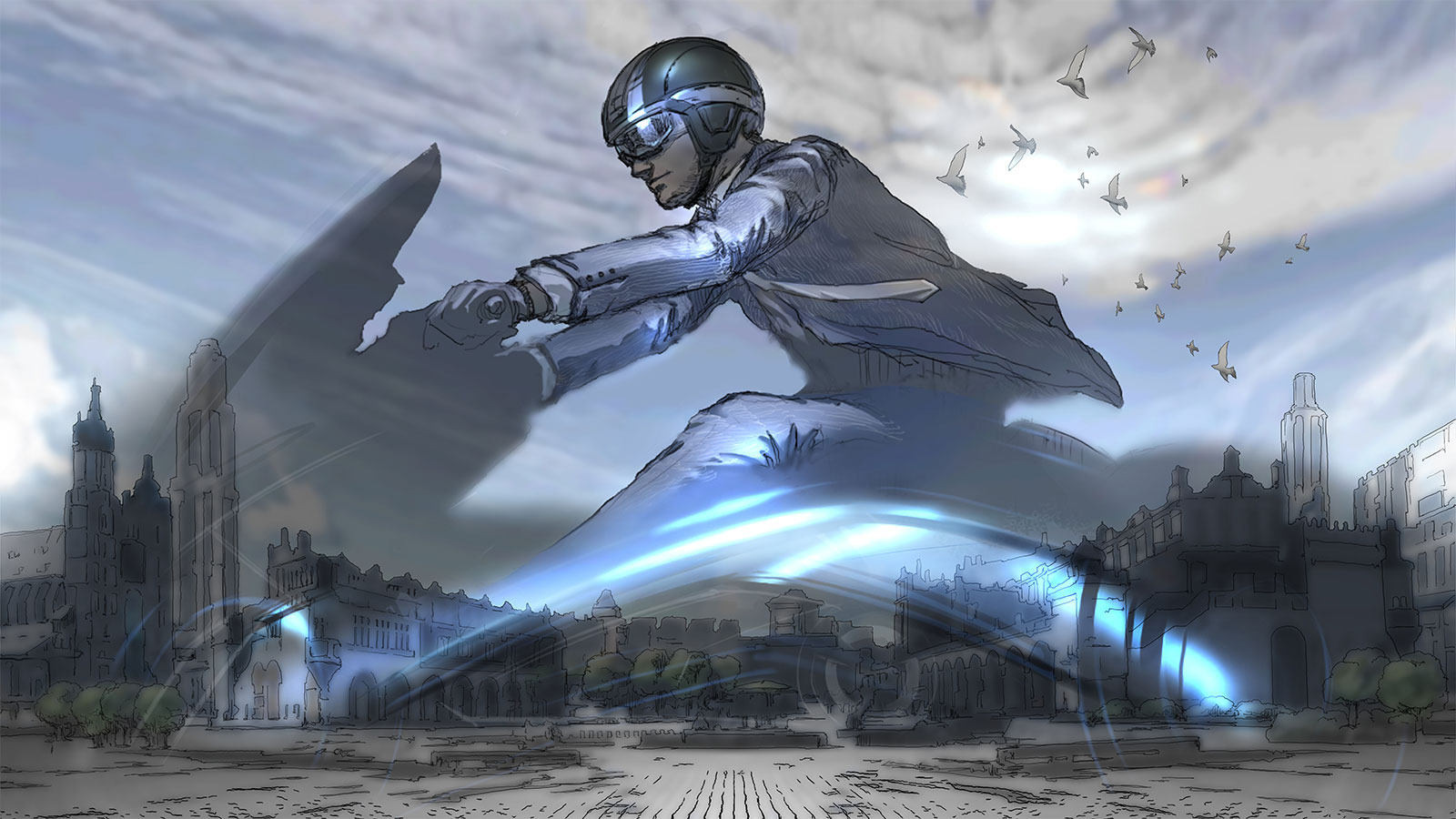
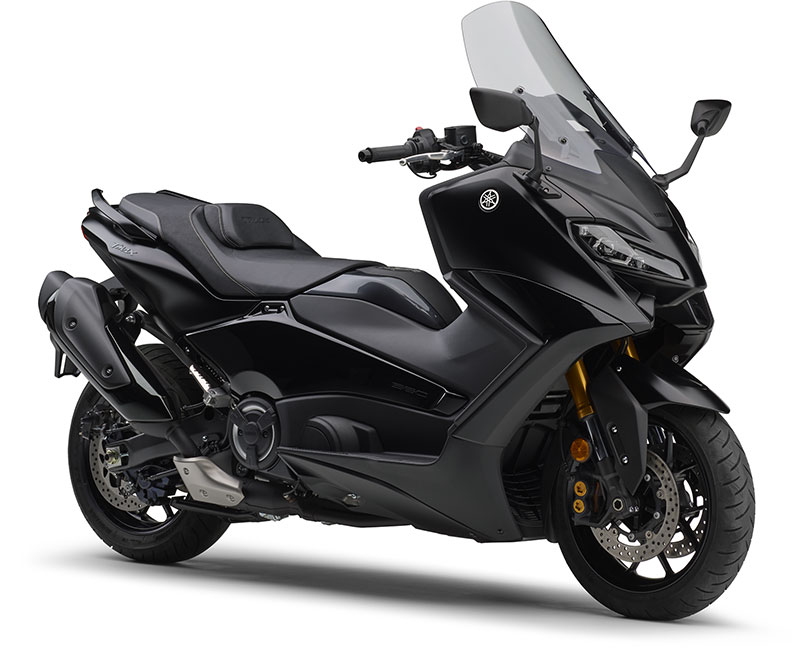
The MAX Series Pedigree
It's fair to say that the MAX Series was born from the lifestyles led by people, particularly in Europe. The first TMAX was conceived by imagining the kind of scooter we thought customers wished existed. The series' earliest “ancestor” was the 250cc Majesty scooter released in 1995. After examining how its users spent their day-to-day lives with it, the next step to take revealed itself and led to the first-generation TMAX. Conceptualized as an “automatic supersport” model, a number of groundbreaking technologies as well as an avant-garde design were adopted to arm it with performance and looks that would overturn all conventions for what a scooter could do. The various technologies and know-how that went into achieving the automatic supersport concept the TMAX would establish was eventually summarized as “MAX DNA.” Today, this DNA has been inherited by the XMAX and NMAX, which both offer a refined, sporty ride and excellent comfort, and their traits and features have been recognized and praised by customers. At the core of these models is the pure, honest pursuit of performance when riding, cornering, and braking.
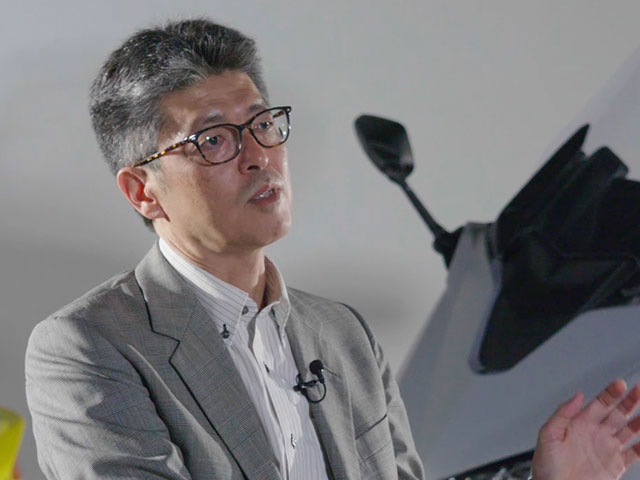
Tatsumi Takahata
MAX Series Project Leader for Successive Generations

Toshiaki Umetani
MAX Series Testing Engineer for Successive Generations
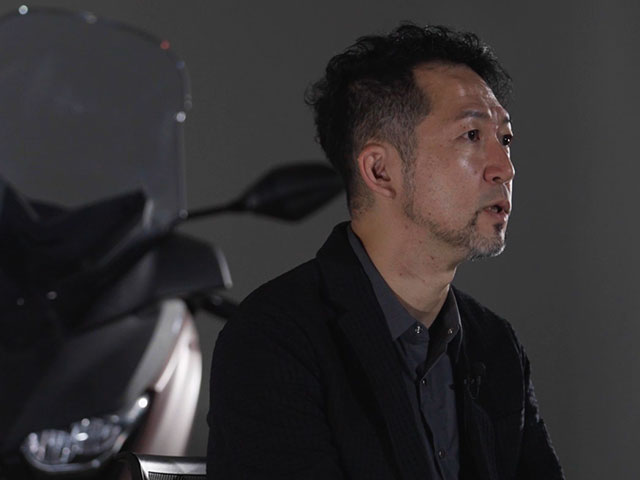
Teppei Maezono
MAX Series Chief Designer
Beginnings: Birth of the “Automatic Supersport” Category
If Yamaha had never developed the Majesty scooter, the MAX Series may not exist today. The Majesty was conceptualized, developed, and marketed as a “sports sedan” on two wheels, and was released first in Japan in 1995 and then in Europe. It was not created to simply be a comfortable commuter vehicle for getting from Point A to Point B, but to have a fun ride similar to a sportbike—true to Yamaha tradition. Its spacious size, ample wind protection, powerful engine, fun even when riding two-up, and of course its sporty character, made it a huge hit in Japan. The joys and more fulfilling life gained through owning a Majesty effectively expanded the customer base.
It was not long after that something unexpected happened. In Italy, often regarded today as the home of the maxi scooter, the number of Majesty users began to surge. What had suddenly made it so popular in Italy? Upon receiving reports of the growing trend, the Majesty's development team immediately traveled to Milan to investigate how customers were actually using their scooters. What they saw was Majesty after Majesty being cared for and ridden by their owners.

Most people who worked in urban areas like Milan did not actually live in the city proper; they would commute in by car or motorcycle from scenic suburbs situated some 50 km away. They would leave their homes in the morning to get on one of the Autostrade highways into the city, typically traveling at 100 km/h or more. Many would also do this by car, of course, but taking any road into the city in the morning almost always means encountering a traffic jam—a common occurrence in just about every city around the world. But the Majesty's maneuverability gave customers the ability to skirt traffic jams and reach the office far faster. And this was not the only advantage. Because of its comfortable ride and sporty performance, the ability to tour on the weekends made riding the Majesty something customers could enjoy seven days a week.
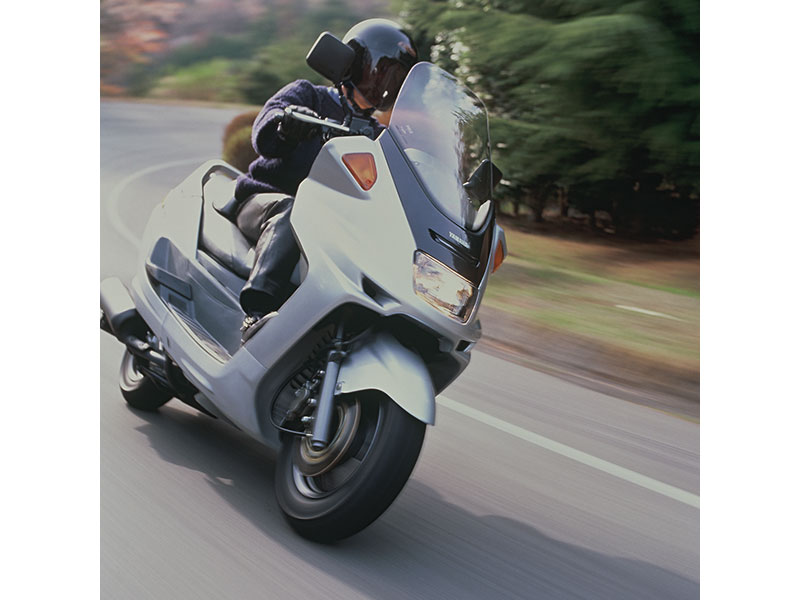

Seeing how owners in Italy were using their scooters day to day prompted Yamaha to devise a new kind of maxi scooter. The key points of development were power and comfort, and one performance guideline was to give the Majesty the same ease and comfort at 140 km/h that it already offered at 120 km/h.
If customers only wanted to get somewhere quickly, supersport bikes were available. However, most office workers in Milan needed to wear a suit to work, and hopping onto a supersport motorcycle wearing a well-tailored suit, polished dress shoes, and a work bag with a laptop inside instead of full-on racing leathers just doesn't make for a good match.
Based on the customer lifestyles the team observed, they got to work developing a maxi scooter conceptualized to marry comfort with sportbike performance—an “automatic supersport.” This would become the very first TMAX. The backgrounds of the engineers involved in the project speak to the uniqueness of the undertaking: most of them had worked on Yamaha's sportbikes. The chassis designers, engine designers, and test riders all had a supersports model of that era on their resumes.

To provide sufficient power and comfort at the speed ranges the project envisioned, the obvious first step was to increase displacement, but the team also knew that a unit swingarm arrangement like the Majesty's wasn't suited to the task. Higher power would require a larger and heavier drivetrain, and this would in turn increase the vehicle's unsprung weight, making it impossible to ensure sufficient suspension stroke. If this were the case, not only would handling suffer but it would also result in an inelegant look for the bike itself. On top of that, it would lead to another problem: the onboard storage space required with a scooter would also not be achievable.
Above all else, the engine and drivetrain needed to be compact. To meet these requirements, a 500cc twin engine with a piston balancer was developed. For motorcycles, it's common practice to house balancer shafts in the crankcase and slight increases in engine width aren't seen as a problem, but that approach was not an option for the TMAX. Because of the necessity for compactness with the power unit, the TMAX utilized Yamaha's first-ever piston balancer design. Visually, it's like a horizontally opposed three-cylinder engine mounted longitudinally in which the rear-facing piston functions as the balancer.

The 2001 TMAX's cylinder arrangement with piston balancer
The drivetrain arrangement also presented a major challenge in the engine's development. As aforementioned, the engineers did not want to use a unit swingarm layout, and the answer they arrived at was to treat the CVT and drivetrain separately. They developed a layout to transmit power from the CVT to the rear wheel via drive sprocket and chain in the same way as a motorcycle. At first glance from the outside, the first-generation TMAX's drive system looks like a unit swingarm found on the average scooter, but it is actually a proper swingarm completely enclosing the drive sprocket and final drive chain. What is even more unique is that there is another sprocket between the primary and final drive sprockets in a two-stage chain-driven layout. One reason for this peculiar approach was the more attractive exterior appearance, but also because of the model's 14-inch rear tire.

The unique drivetrain setup for the first-generation TMAX
If it used a final drive sprocket with the number of teeth normally used to match the power of a 500cc engine, it would look too big for the tire size and spoil the light look of the rear end. This is why the engineers intentionally showed that the TMAX had the same kind of drivetrain as a sportbike's, and used an independent swingarm and rear suspension. Beyond the performance advantages, this visually communicated at a glance that while the TMAX was a maxi scooter, it had a sportbike's spirit.
The frame was also created using the same engineering methods employed for sportbikes. Most scooters are typically designed with underbone frames, but the TMAX used a diamond frame made of high-tensile steel tubing—the same as a motorcycle. The rigid-mounted engine was used as a stressed member of the frame and the swingarm pivot positioned at the engine's rearmost end provided a level of chassis rigidity that made even sporty riding natural. In addition, to take advantage of that rigidity, the front fork adopted the same structure as a sportbike, with the upper and lower triple clamps joined together.
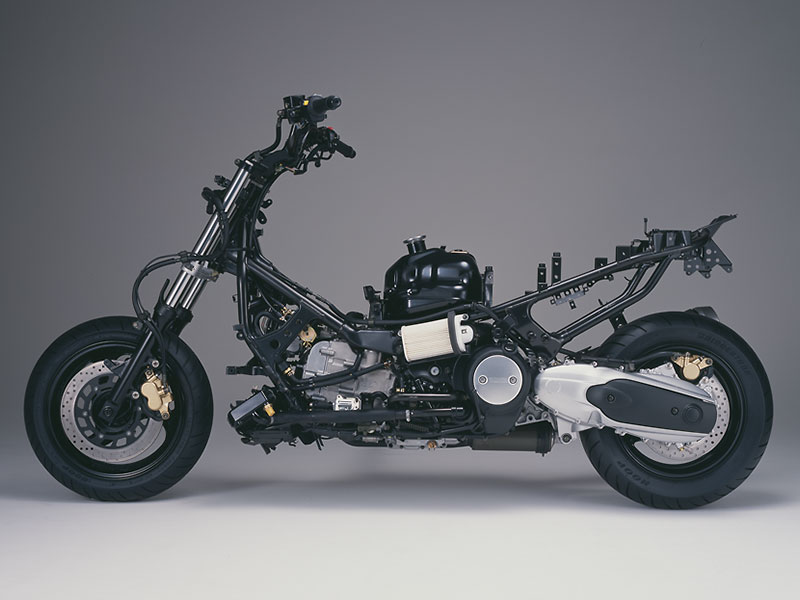
As development progressed, the TMAX—which was then being called by its project codename—gained a nickname: the “R5.” In other words, if the model was likened to the R-Series of supersport models, it would sit among the R1, R7, and R6 as the R5. The project's test riders were especially conscious of this image of the TMAX as the R5 as they worked to refine its stability, ridability, and handling. The riding position they arrived at was in a Goldilocks zone that would retain the ease of use unique to scooters, but still be fun for more spirited riding. This was achieved by adjusting the rider triangle through test after test after test. The result was the user being able to enjoy comfortable cruises up and down the Autostrade in a more relaxed riding position, but then shift into a more committed position once arriving at the twisties and revel in the satisfaction of showing the TMAX's rear wheel to sportbikes up ahead. To bring the concept of an “automatic supersport” to life, a vehicle that would give the user the tools to ride exactly how they want—without a clutch for gearshifts and needing only the throttle and brakes—required the team to create an ample feeling of leeway with the engine and chassis that would in turn produce the level of comfort and ease of use they sought.
To make the automatic supersport concept a reality, comfort was an undeniably large factor, and part of providing that was finding the right balance between good wind protection and aerodynamic efficiency. For example, what will happen when a customer is cruising on the Autostrade at 130 or 140 km/h with a business suit on? The tie will be buffeted by the wind and chaotically flip around, often hitting the helmet. So, the TMAX's test riders put on their racing suits but tied neckties on them as well during high-speed test runs, and then worked with the chassis engineers and designers to find the optimal solution for keeping such wind turbulence at bay. Ever since then, each new MAX model has been subjected to this racing leathers + necktie test and it is now famously associated with the line.
While the TMAX was and is categorized as a maxi scooter, the designers had originally imagined the bike's form from a completely different direction: a drag racer. The image in their minds was the engine in the center of the chassis producing gobs of power that was transmitted to the rear wheel to rocket the bike forward. Yamaha already had such a model in the 1,200cc Vmax and the designers used it as one point of reference. The body design team was involved early on in the project and worked to gain a shared understanding of what the TMAX was aiming to do, and the how's and what's that would be needed to achieve it. For Yamaha Motor, design is about beautifully blending functions and performance together, and that requires its designers to have a certain degree of engineering knowledge and understanding. Thanks to that, deciding the direction for the TMAX's form was a surprisingly smooth affair and a clay model was created at 1/3 scale. That first TMAX clay model contained within it the project team's dreams and early engineering results that the world at the time still had yet to see.
It is hard to imagine anybody today realizing on their own that the origin of the MAX Series' iconic boomerang motif was originally conceptualized to visually express the flow of power with a drag racer, in which the bike is propelled forward as the front wheel responds to the massive power being sent to the rear wheel. The aim of the boomerang motif was to resemble a frame and firmly connect the front and rear wheel axles together visually while emphasizing the engine's presence in the center as the source of the machine's power.
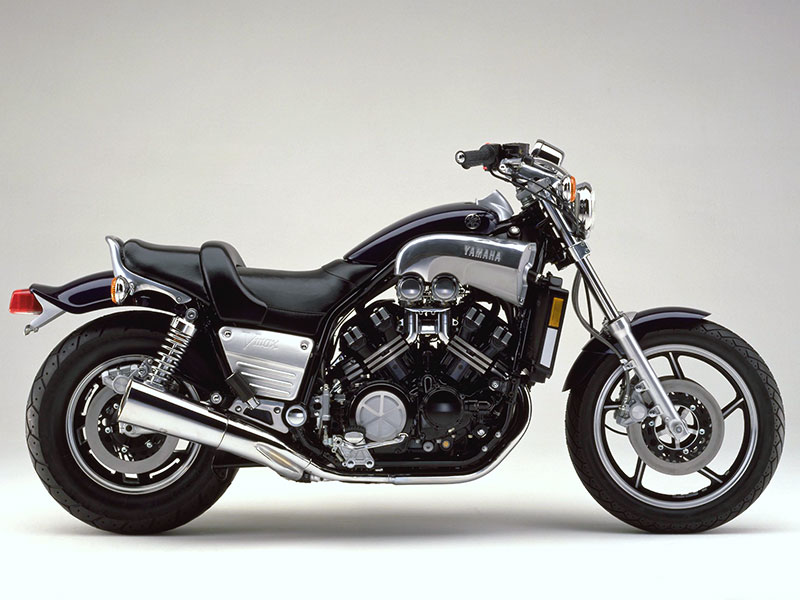

The 1,200cc Vmax was one inspiration for designing the first TMAX
Everything about the TMAX was a venture into new territory, from its concept and functions to its performance and form. The first TMAX's eye-catching yellow color scheme was selected to clearly illustrate its unique and cutting-edge status when it debuted. Design trends of the time often saw yellow chosen to signify innovative and modern product designs, and for Yamaha, the yellow bodywork also represented the passion the company poured into creating the TMAX.

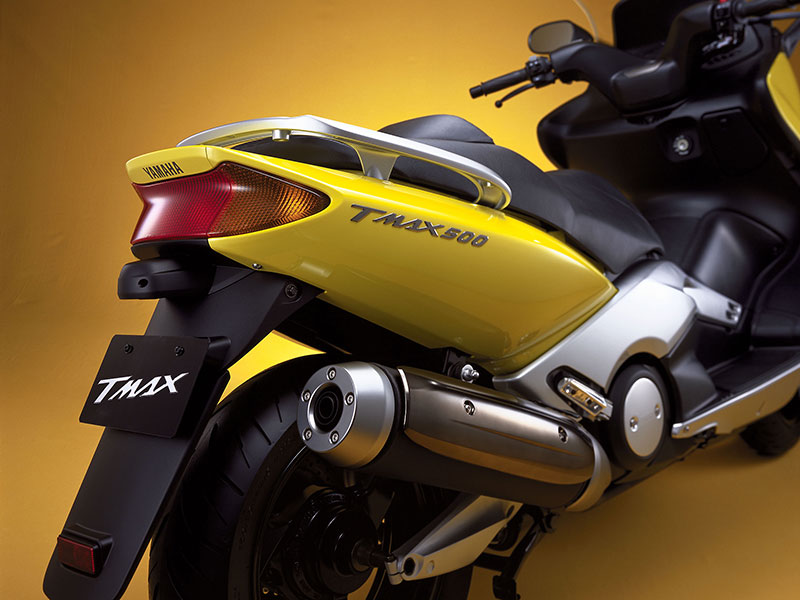
With its development finally complete, the first TMAX was released in 2001, a long six years after the Majesty's 1995 debut. The brochure at its launch boldly had “47% front wheel weight distribution and 50° of lean angle” as its chief copy—info never really used for advertising a scooter. The entirely new value the TMAX offered was well received by customers, and while it initially won recognition as a maxi scooter sportbike owners could switch to and be equally satisfied, the TMAX today shines on its own merits. It now occupies an unrivaled position in the market built on value unique to it alone, and the way it changed what people thought possible with a scooter has become the foundation of today's MAX Series.
Progression: The MAX Family Tree
Since the first-generation TMAX's debut in 2001, its distinctiveness and value in the space have become widely recognized and Yamaha has never wavered in taking the model through successive stages of evolution. In 2004, the second generation received minor changes to improve chassis rigidity and handling stability, gaining a front fork with bigger inner tubes, a 15-inch rear wheel, radial tires, twin front brake discs, and fuel injection. Then in 2008, the third-generation TMAX got a full update to further improve chassis rigidity and reduce weight. The frame was changed from a steel pipe diamond frame to a controlled fill (CF) die-cast aluminum frame. CF aluminum die-casting was a then-new casting technique developed exclusively by Yamaha that had already begun seeing use to create the YZF-R6's swingarm, among other parts. For the TMAX, it was virtually an aluminum replica of the proven diamond frame that had been used until then, achieving its rigidity characteristics but with lightweight aluminum instead. The switch was actually a proposal made by the manufacturing departments, who proclaimed that they could make a lighter frame with the same performance as the diamond frame's for the same cost, thus the project team had no reason to decline their offer. The brochure for that generation included a photo of the frame with all the surrounding bodywork removed, surprising many who saw the numerous cutting-edge, high-performance tech the machine had hidden underneath its stylish exterior. Furthermore, the front gained the same monoblock brake calipers used on the R-Series and a 15-inch front wheel, making both the front and rear wheels the same size.
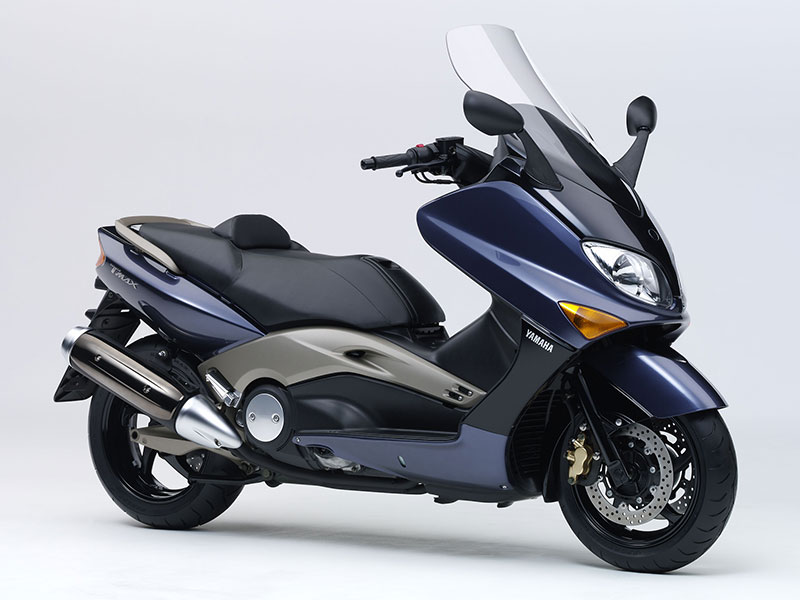

The second- and third-generation models were released in 2004 and 2008
With the TMAX's model revisions up to that point, the focus had primarily been on raising chassis rigidity, while with the engine, greater refinement through different settings had been the goal. However, in 2012 with the arrival of the fourth-generation TMAX, the engine finally received ample attention. It wasn't just the customers that were imagining a TMAX with a new level of power and ridability—Yamaha was as well.
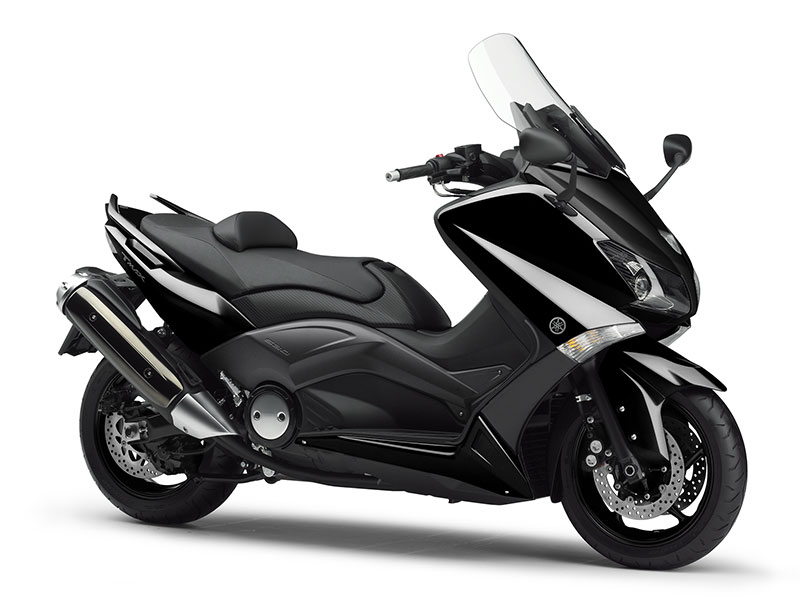
Instead of simply boring out the cylinders, the engineers elected to design an all-new 530cc powerplant that largely retained the engine's basic layout; the only parts that were carried over from the previous model were certain bearings. To create characteristics that would propel the machine forward with authority from low speeds, the team set a performance goal of 10% more torque and found that the best way to achieve that was a small 30cc increase in displacement. Even this slight bump in capacity would drastically affect the bike's ridability, but the engineers already knew that. It was when the new engine was combined with the CVT's shifting characteristics that the fourth-generation TMAX delivered performance that couldn't be understood only on the spec sheet.
This approach would later have a major influence on the engine design of the 560cc TMAX and other MAX Series models.
Also in 2012, the chain drive—which had always been engineered specifically for the TMAX—was replaced by a new belt drive. The 2015 facelift also brought new updates to match the engine's performance, namely, an inverted front fork, radial-mount front brake calipers, and a stiffer swingarm.
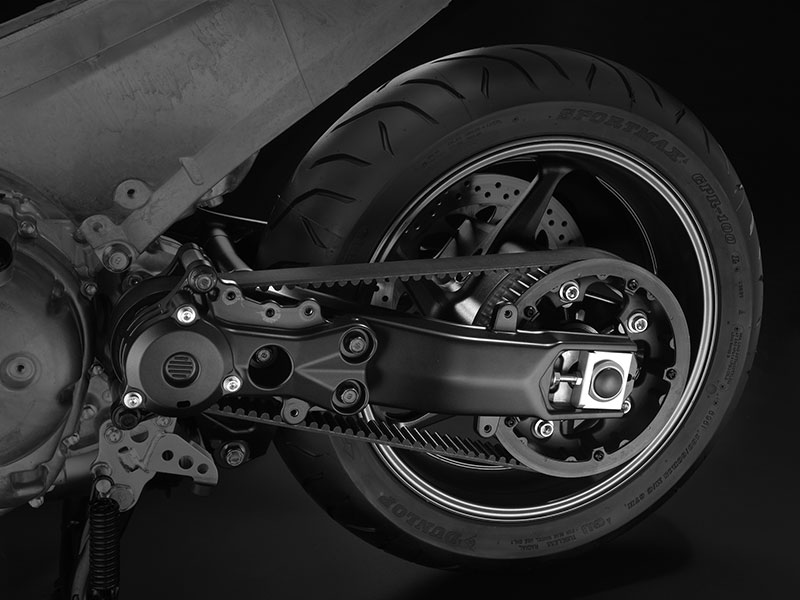
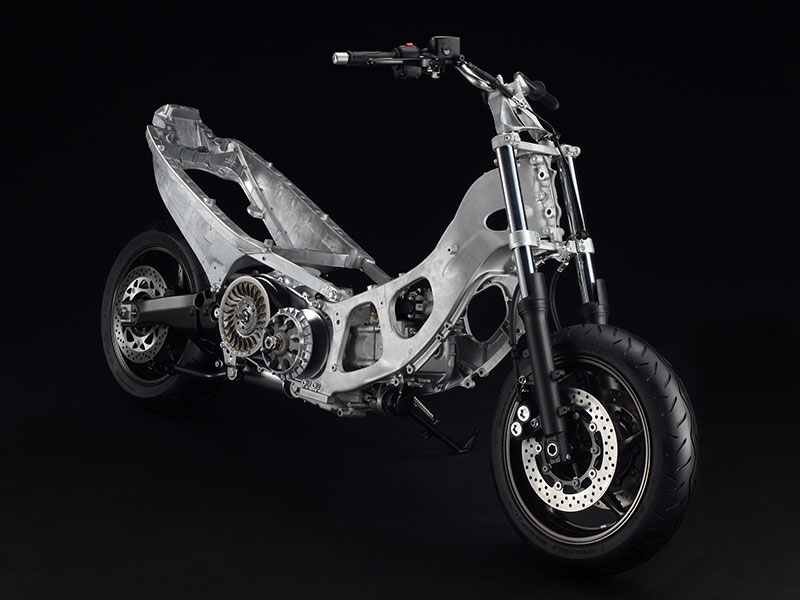
With each model update since the first TMAX in 2001, Yamaha has kept its finger on the pulse of the times, watching how customer lifestyles and trends change and updating the TMAX's exterior design accordingly. That isn't to say the essence of the overall design has been altered. The TMAX underwent continuous evolution—with altered riding positions and other changes worked in—but the design has stayed faithful to its origins. For example, the first-generation model's instrument panel had a similar design to a sportbike's, but was gradually updated to a more advanced and modern style. Now, the bike's cockpit view has more in common with the look and feel of sitting in the driver's seat of a high-end car.
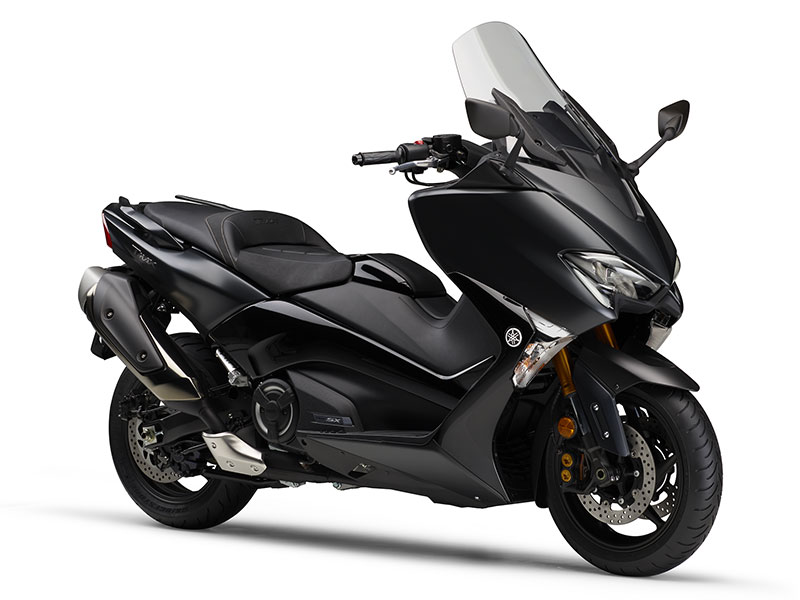
The 2017 model gained an all-new exterior design for a much more modern look, while the newly designed CF aluminum die-cast frame and swingarm dropped a whopping 9 kg from the bike. Further, the addition of onboard electronic rider aids greatly improved the TMAX's performance qualities. Until then, performance tuning for the model had mostly been mechanical in nature, but to further refine its ridability and traction characteristics, the 2017 model adopted the Yamaha Chip Controlled Throttle (YCC-T), a traction control system, and the D-Mode feature for selectable engine power modes.
The progenitor of the MAX Series—the Majesty—maintained its status as the 250cc sport scooter to have, all the way from its debut in 1995 to 2002 when sales ended. Then in 2006, the XMAX was released as an all-new 250cc sport scooter to replace the Majesty.


While its 250cc engine was based on the Majesty's, it was otherwise a completely new offering that incorporated the design direction and various technologies proven with the bigger TMAX. The chassis and looks were wholly different to the Majesty's and the performance emphasis on comfort shifted firmly toward the sporty end, aiming to provide an agile ride equally at home around town or on twisty roads. To fit this new orientation, the design stripped away the signature traits of a typical maxi scooter and took on a more svelte front fairing and sharper lines. To emphasize its connection with the TMAX, the XMAX adopted the same boomerang motif and twin-eye headlights. Since then, the XMAX has undergone facelifts and other minor design changes through three generations, and with the inclusion of a 400cc model in 2014, there are now XMAX models in three displacement segments (125cc, 250cc, and 400cc).
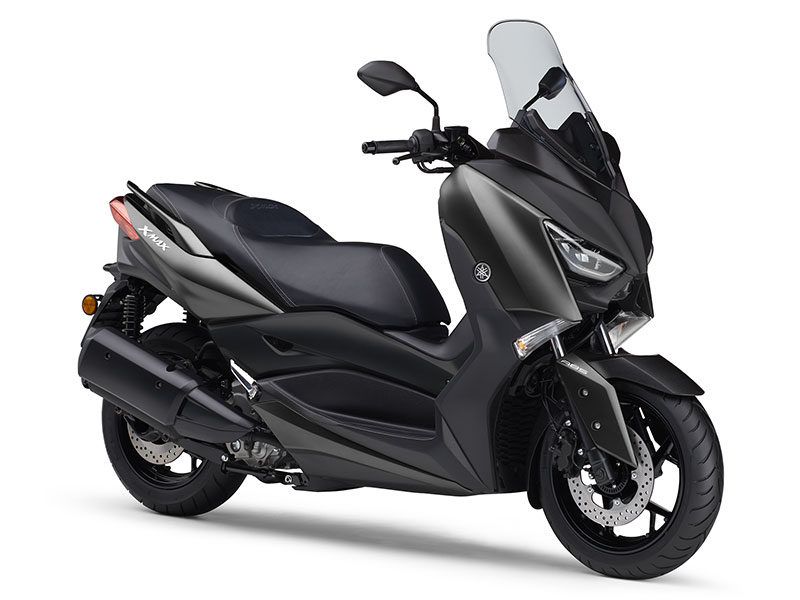
In 2017, 11 years after the first XMAX was released in 2006, an all-new fourth generation made its debut with newly developed 250cc and 300cc engines. These featured Yamaha's “BLUE CORE” technologies, such as all-aluminum DiASil cylinders offset from the crankshaft to reduce mechanical losses. Together with the CVTs tuned specifically for these engines, they delivered both excellent power and low fuel consumption. The frame was also fully redesigned to handle the higher engine performance, making the XMAX lightweight, agile, and comfortable. Additionally, the new front fork greatly contributed to its sporty, high-quality ride. Like the TMAX, the fork used the same setup as a motorcycle, with the upper and lower triple clamps connected to create a highly rigid chassis. This yielded better handling stability and clearer feedback from the front tire, creating an overall sportier ride. These models also came standard with a traction control system and ABS.
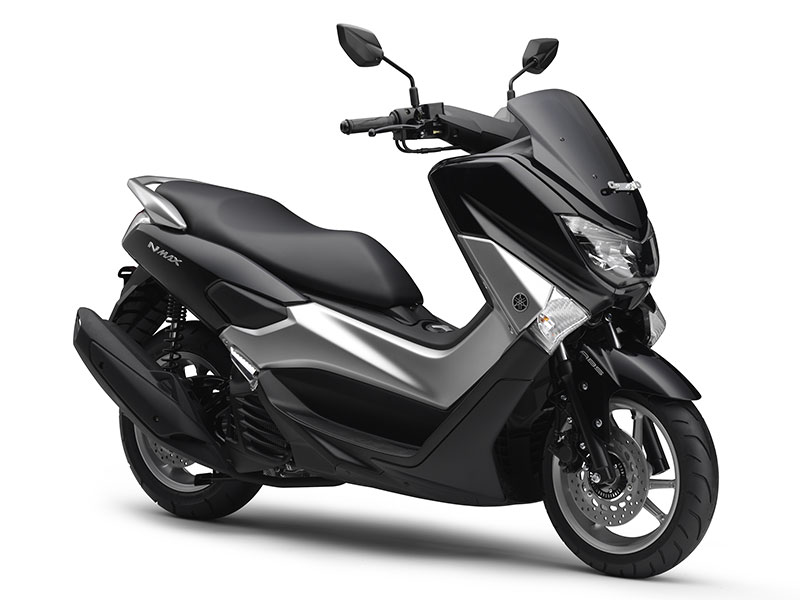
Two years earlier in 2015, the youngest sibling in the MAX Series was added to the lineup: the NMAX. It was intentionally developed to be released in markets around the world and 125cc and 155cc variations were available in a shared chassis platform. These engines represented the culmination of several groundbreaking technologies from Yamaha at the time. They were developed to strike a fine balance between performance and fuel economy and engines created with this approach were given the “BLUE CORE” name. Each “BLUE CORE” engine ensures that the rpm range producing the strongest torque is also in the ideal zone for fuel efficiency. This served to shed the image associated with small-displacement engines until then, in which you had rev them well into the high end to produce ample power. “BLUE CORE” technologies were also employed in the aforementioned XMAX. Setting the torque zone low and setting up the CVT to suit resulted in sufficient torque being generated at all times without having to rev the engine toward redline.
With the use of offset DiASil cylinders and other means to reduce mechanical losses, the “BLUE CORE” engine was an exquisite piece of engineering that changed the commonly held image of small displacement engines. In addition, to achieve torquey characteristics throughout the entire rev range, both the 125cc and 155cc engines were equipped with a Variable Valve Actuation (VVA) system. At lower rpm, the corresponding low-rpm cam operates to produce torque, and at higher rpm, the high-rpm cam engages to enhance acceleration performance. The VVA carries the rider so smoothly and naturally into the high-speed range that they do not even notice when the cams change over.
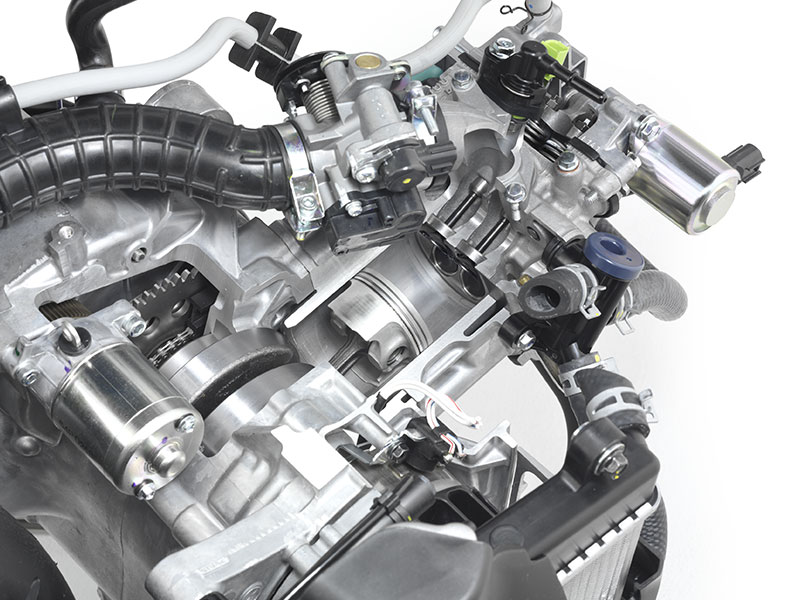

When the first prototype with a “BLUE CORE” engine was put in the hands of a test rider, he said that the performance difference over previous 125cc engines was so stark that he couldn't stop grinning inside his helmet. The acceleration was utterly unlike anything 125cc engines up to that point could provide, thus the NMAX offered the performance and ride quality that instantly set a new standard for the class.
To take advantage of the gains brought by the newly developed engine, the chassis utilized an all-new high-rigidity frame. Normally, scooters use underbone frames to ensure sufficient space for legroom and underseat storage, but these frames have an innate drawback in that it is extremely difficult to build torsional rigidity into them. To solve this problem for the NMAX, the chassis engineers devised a frame design with two pipes on the left and right joined to the head pipe in order to achieve the ideal torsional rigidity.
Common design elements tying the NMAX to the family include the boomerang motif, the bold twin-eye headlights, and a sporty, athletic form. However, the XMAX and the NMAX are not simply scaled-down precision copies of the TMAX. Rather, they were shaped to best fit their individual size requirements, intended uses, and customer lifestyles. Additionally, the latest NMAX features onboard electronics like traction control and ABS, smartphone connectivity, and more, culminating in a ride, design, and quality that overturns the notion of displacement class being the decider of the overall experience.
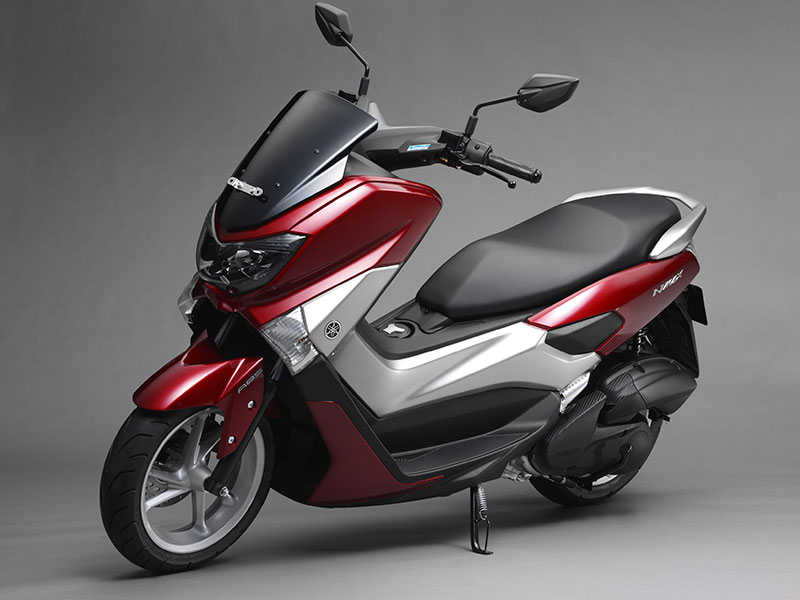

Today: MAX DNA in All Directions
The unique value created by the TMAX formed the ideal stepping stone for its development into the MAX Series. This was precisely because Yamaha could consistently contemplate what it means to wear the MAX label instead of constantly worrying about the competition. Today, with the four variations of the XMAX (125cc, 250cc, 300cc, and 400cc), two versions of the NMAX (125cc and 155cc), and the 560cc TMAX at the top of the lineup today, the series has grown to offer a sporty and comfortable ride to customers around the world in almost any displacement class, but all are undoubtedly true to MAX DNA.
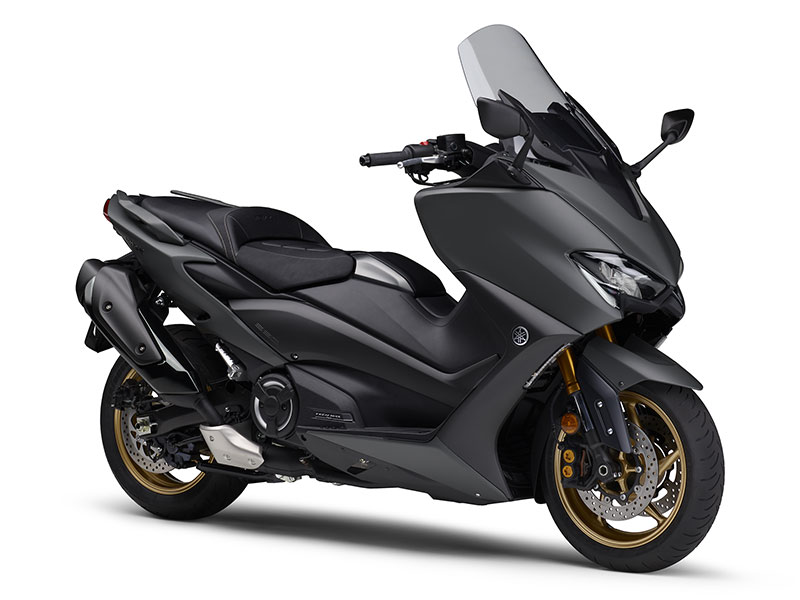
In 2020, the flagship TMAX was completely revamped for its fourth generation, with its displacement increased from 530cc to 560cc for higher performance and to comply with Euro 5 exhaust regulations. However, the main purpose of the bump in displacement was not to increase acceleration or top speed, but to improve the quality of the ride, as was the case when the TMAX's displacement was first increased from 500cc to 530cc. In the world of supersport motorcycles, you are constantly opening and closing the throttle as you navigate a course, trying to keep the revs up high in the powerband. The TMAX, however, is about being able to ride with the same level of freedom but with only the throttle and brakes, providing a balanced mix of calm and capable. Instead of deriving fun from high-revving horsepower, the bulk of the torque is set in the low- to mid-rpm range and the CVT settings made to match, allowing torque to be freely extracted at any time. This approach was later applied to the development of later “BLUE CORE” engines to create power units with a quality of performance that belies their smaller displacements. In other words, MAX DNA grew to even encompass the “BLUE CORE” engines used in the NMAX and XMAX.
Taking on new challenges one after another is one of the rights afforded to a pioneering model like the TMAX, and the 2020 model demonstrated this status at work again with the dedication and engineering put into its exhaust note. Yamaha considers an engine's sound to be another aspect of performance, and the TMAX's 360° crank parallel twin has an even firing interval, so the sound it generates is characterized by frequencies that are numerical integer multiples (harmonic). By filtering out noise components like mechanical noise, Yamaha has woven in what is called in music a sound with “tonality.” In other words, by emitting purely harmonic tones, the powerful, high-quality sound produced by the exhaust from low rpm rises in direct correlation with the rider pinning the throttle open, the crescendo of sound pressure serving to amplify the feeling of acceleration.
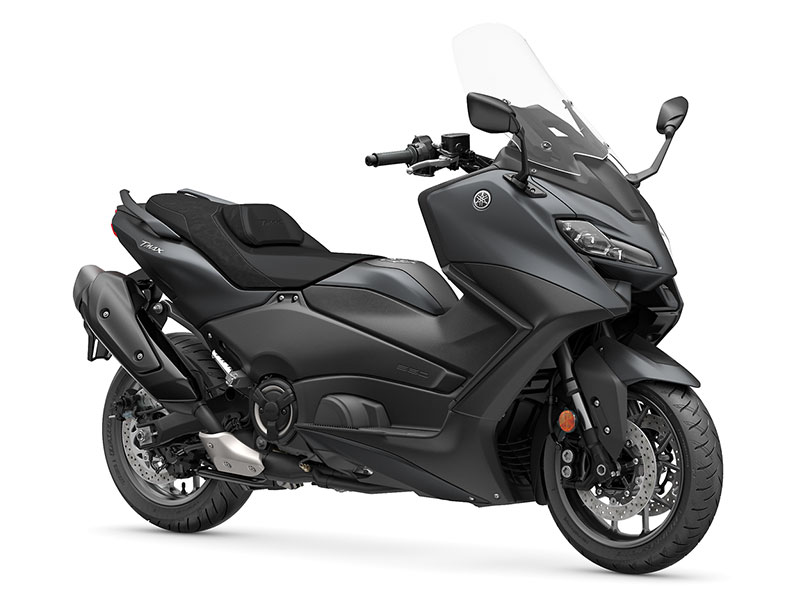
The 2022 TMAX itself was a milestone in that it would be the model marking the super scooter's 20th year of existence, and thus it was a full redesign aimed at rediscovering the core essences of the TMAX brand. The three focal points for the design were, 1) a bold silhouette with a sleek, compacted look and feel, 2) traits making it recognizable as a TMAX at a glance, and 3) an exterior design with clearly defined contrasts for a serious image. The design is based on the same prominent horizontal lines adopted with the YZF-R1, shaving away excess bulk and not hiding functional parts behind bodywork to convey the power residing within the model's air of calm and stability that pushes the machine forward. In 2022, a commemorative 20th Anniversary TMAX was also released—although with the earlier 2020 model—but with new exterior styling and exclusive finishing.
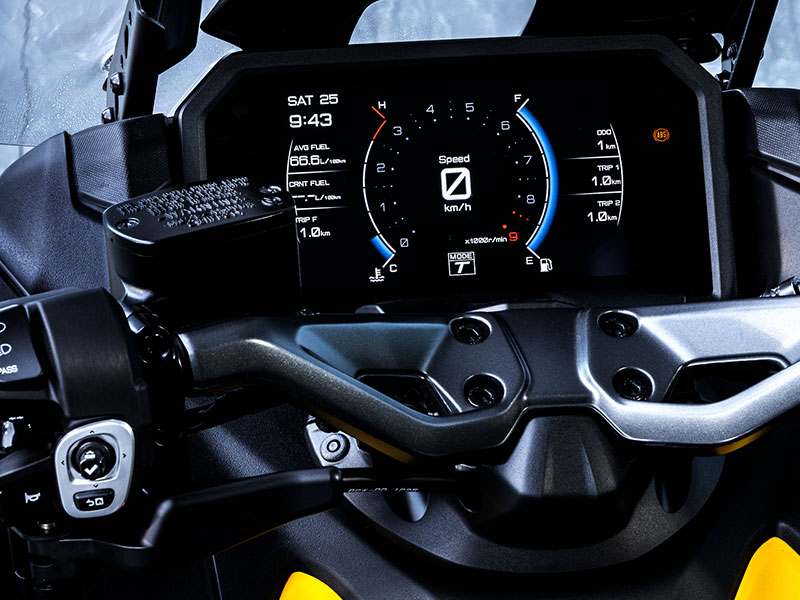
The 2022 TMAX also boasts an item befitting a flagship model—a 7-inch full-color TFT screen chock full of features. The screen is the same spec as those used in the cabins of high-end cars, remains legible regardless of the weather conditions, and has three different display themes to choose from. Additionally, the 2022 TMAX is equipped for smartphone connectivity, which enables the TFT screen to be linked to the user's smartphone and provide onboard navigation via a dedicated Garmin app, further enhancing the convenience and comfort of the ride.
The XMAX was also redesigned for 2023 to be even more “XMAX.” The XMAX is designed to reduce the various stresses encountered in daily use and offer a more comfortable and stimulating personal mobility experience, and the approach used to give visual expression to this performance was to accentuate the defining traits that make an XMAX an XMAX. The design approach taken was to outwardly sculpt the power and potential from within the machine, and included accentuating its motorcycle type front fork, redesigning the frame motif to emphasize power delivery and chassis stability, and the front fairing's design to express agile handling. In short, it is an exterior form that is “XMAX” unfiltered.
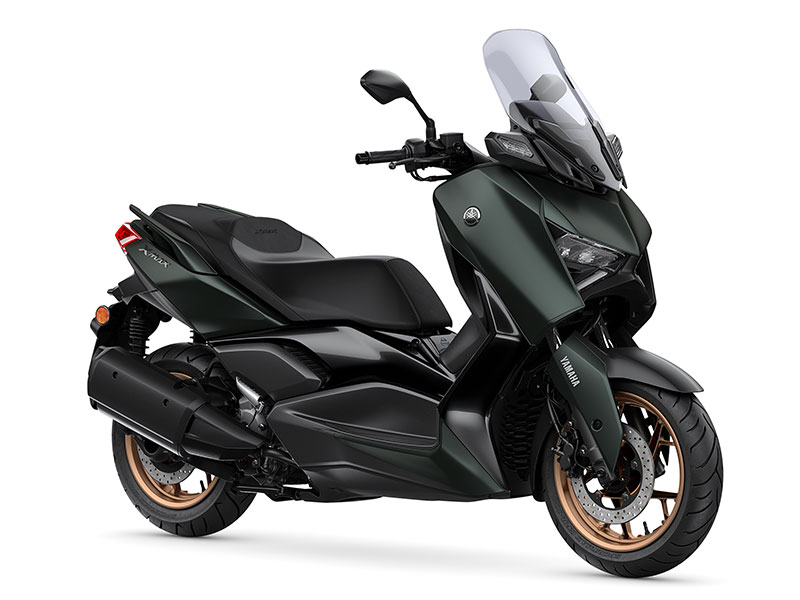
In addition, the model's symbolic “X” motif was worked into the headlight and brake light. Correspondingly, the TMAX also features a taillight and brake light forming a “T,” much like how the rear lights on the YZF-R1 form a “1.” While the purpose of these lights is to ensure conspicuity, incorporating these neat touches is another part of Yamaha's attention to detail with its designs.
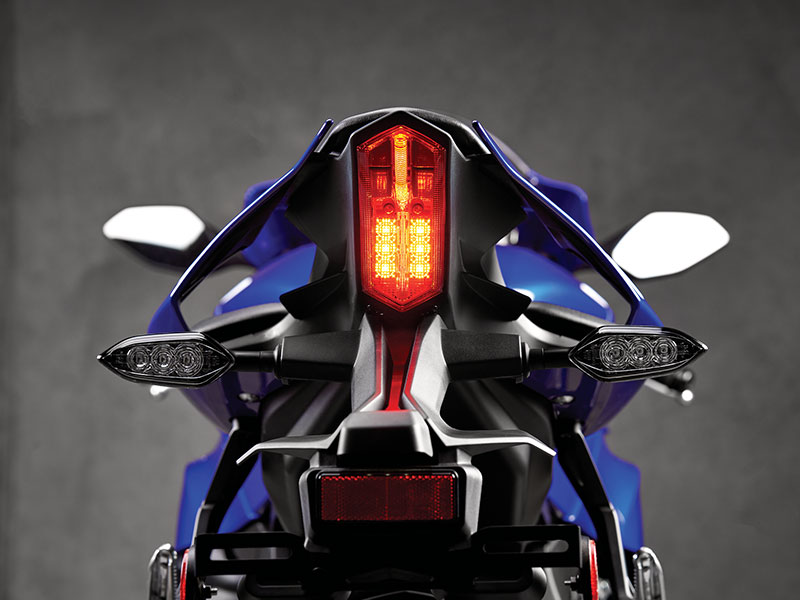
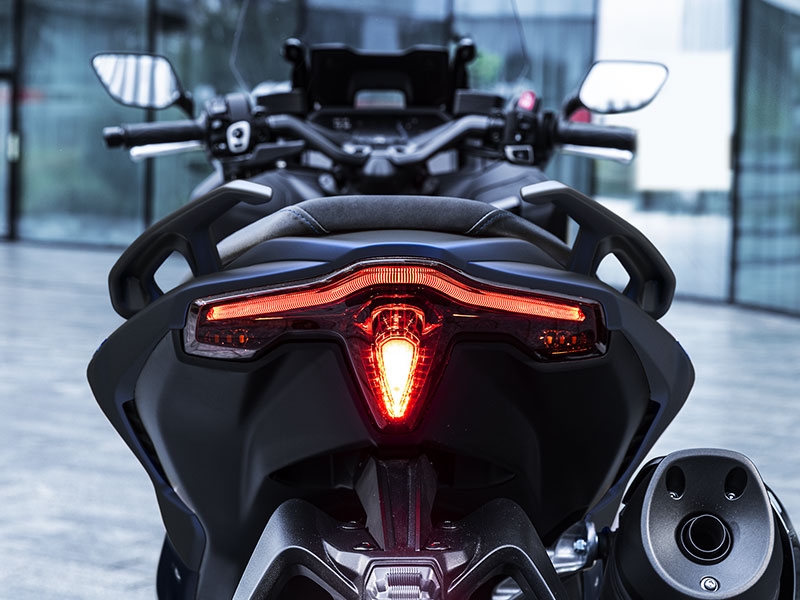

Commitment: Always Moving Ahead for Fun in Mobility
It has been over two decades since the first TMAX burst onto the scene. In that time, it has undergone multiple model revisions and updates as well as seen the addition of the XMAX and NMAX to the family, becoming today's MAX Series. When speaking on the series in general, looking back on what lies at its core—the automatic supersport concept—and how it was realized in the first place reveals the line's future path. And, if the individual mechanisms and its design are how creating an automatic supersport model is achieved, then what makes that possible is the talent, imagination, and creativity of the engineers and designers. So then, what makes the MAX Series what it is?
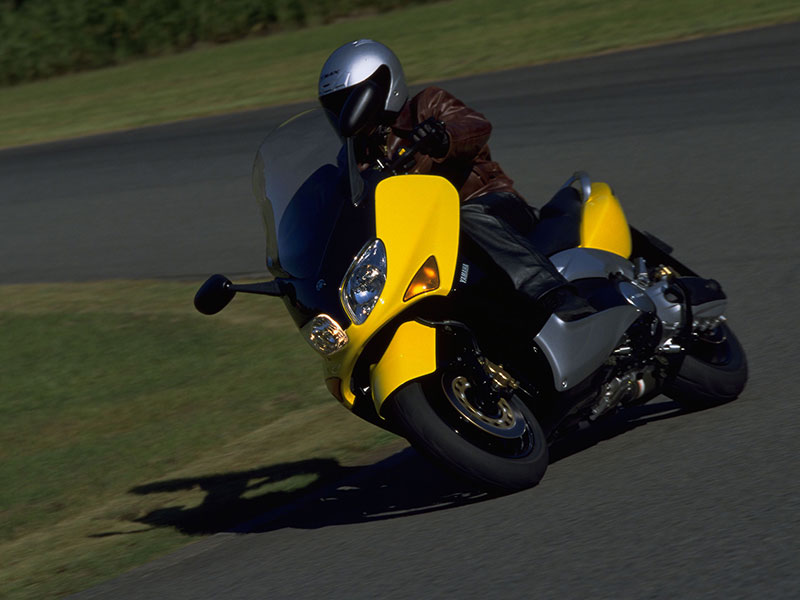
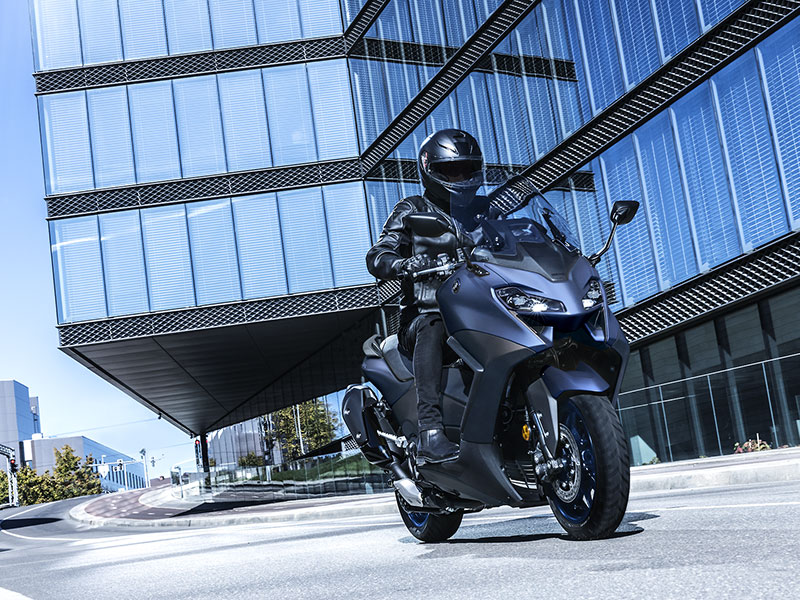
From the 2nd generation TMAX to today's TMAX, XMAX, and NMAX, what has remained a constant is a project leader taking a bird's-eye view of the series and the test riders who have helped craft the performance and comfort of each model. They can determine the ideals for what a MAX model should be like just by sitting down on a test bike, even with details like the handlebar position. Of course, the actual development data and materials for each model are stored in Yamaha's archives, but what it truly comes down to is the keen and trained senses of the test riders, who know what constitutes a MAX model that can be offered to customers with confidence. After all, these riders themselves are passionate TMAX fans, and as they go about their own daily lives, meeting and talking to current owners at touring destinations and the like, they pick up hints and ideas for what the MAX Series should be. Yamaha has a tradition of passing this approach to development on to the next generation, not only through the machines themselves but also in words. The roots of this tradition are in Yamaha's Jin-Ki Kanno development ideal: the seductive exhilaration felt when one with the machine that is shared as a baseline when quantifying and integrating it into a Yamaha's performance.
Nobody knows what the future holds, but as long as people have lives to live, the need to move from place to place will remain, as will the human desire to do so in comfortable, enjoyable ways. In the same way Yamaha met the needs of people on the outskirts of Milan who wanted to commute to the city with the Majesty, Yamaha will continue to create new mobility experiences through the MAX Series.
These sport scooters were given life from the lifestyles led by customers, and as those lifestyles continue to change and diversify, the MAX family tree will grow yet more new branches. What powers them also may be set to change. From here onward, how will MAX DNA manifest and transform the series? For Yamaha, the quest to find the answer is an exciting one.
Products
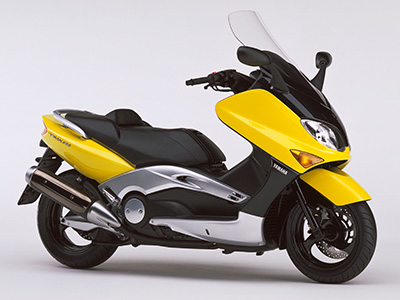
- TMAX
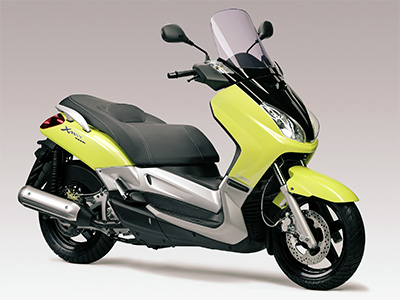
- XMAX

- NMAX